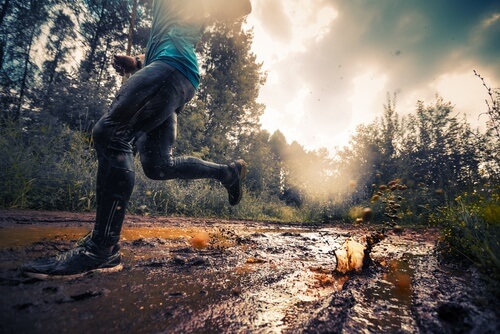Best Running Shoes for Plantar Fasciitis
This page contains affiliate links. As an Amazon Associate I earn from qualifying purchases.
The most common injury among runners is plantar fasciitis. This is a result of the tear from tension and stress on the plantar fascia. The plantar fascia is a tissue linking the heel to the toes. As one does running and sports that cause this tissue to overly stretch, tiny tears may occur in it. Doctors note a few factors that cause this problem. Some of them are aging, overpronation, obesity, and tight calf muscles.
One of the best ways to deal with plantar fasciitis is wearing specially made running shoes. The makers design them to help runners with this problem. A few features must always be noted before making a choice. For one, great arch support and good shock absorption must be there in a Plantar Fasciitis running shoes. Overall, to help you make the best pick, we shall suggest some of the best brands based on our research.
Quick Navigation
At a Glance: Our Top Picks for Best Running Shoes for Plantar Fasciitis
| IMAGE | PRODUCT | DETAILS | ||
|---|---|---|---|---|
BEST OVERALL 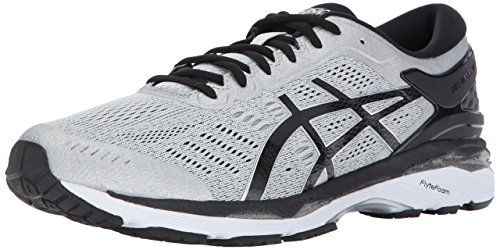 | BEST OVERALL |
| View on Amazon → | |
BEST AFFORDABLE  | BEST AFFORDABLE |
| View on Amazon → | |
BEST MEN'S RUNNING SHOES PLANTAR FASCIITIS  | BEST MEN'S RUNNING SHOES PLANTAR FASCIITIS |
| View on Amazon → | |
BEST WOMEN'S RUNNING SHOES PLANTAR FASCIITIS  | Brooks Adrenaline GTS 18 |
| View on Amazon → | |
BEST FOR HIGH ARCHES AND PLANTAR FASCIITIS  | BEST FOR HIGH ARCHES AND PLANTAR FASCIITIS |
| View on Amazon → |
Best Rated Running Shoes for Plantar Fasciitis Reviewed
There are many running shoes for plantar fasciitis there in the market due to progress in research. We have chosen a few that can help wearers ease pains linked to this problem. The list below mentions them all:

- Great stability
- The gel in the heel protects the heel from wearing out
- Super comfortable
- Gives solid support
- Often recommended by podiatrists
- A few people say it does not have enough cushioning
- Runs a bit too narrow
- Great stability
- The gel in the heel protects the heel from wearing out
- Super comfortable
- Gives solid support
- Often recommended by podiatrists
- A few people say it does not have enough cushioning
- Runs a bit too narrow
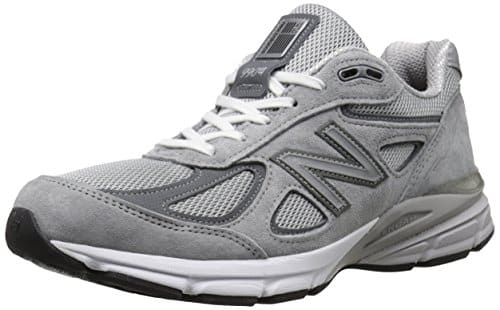
- One of the most comfortable shoes out there
- Works well for Plantar Fasciitis
- Offers great roll, lateral and ankle support
- Light in weight
- Has good airflow
- Some quality control hitches
- Some shoes are inconsistent size
- One of the most comfortable shoes out there
- Works well for Plantar Fasciitis
- Offers great roll, lateral and ankle support
- Light in weight
- Has good airflow
- Some quality control hitches
- Some shoes are inconsistent size

- Good arch support
- Allows the use of orthotics
- Great for plantar fasciitis
- Best for walking on pavement or concrete
- Very heavy and noisy
- Style and color are off
- Good arch support
- Allows the use of orthotics
- Great for plantar fasciitis
- Best for walking on pavement or concrete
- Very heavy and noisy
- Style and color are off

- Super comfortable
- Good support and balance
- Stylish and colorful
- Sturdy yet light in weight
- Very breathable
- A few users say it has poor quality control
- Some of the shoes were not true to size
- Super comfortable
- Good support and balance
- Stylish and colorful
- Sturdy yet light in weight
- Very breathable
- A few users say it has poor quality control
- Some of the shoes were not true to size
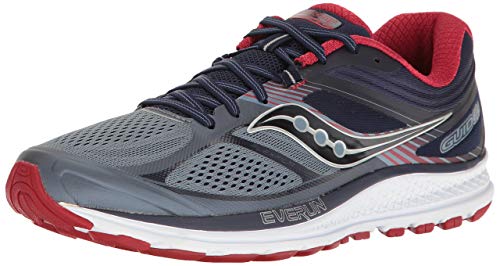
- Affordable
- Light in weight
- Lots of cushion
- Gives a great amount of stability
- A few people say it runs too small
- Some of the shoes have a narrow toe box
- Affordable
- Light in weight
- Lots of cushion
- Gives a great amount of stability
- A few people say it runs too small
- Some of the shoes have a narrow toe box
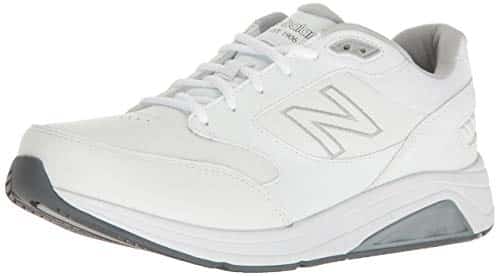
- Comfortable shoe for wide feet
- Gives great support with Rollbar
- Great and colorful look
- Flexible yet strong for walking
- Some say the tongue is too short
- A few customers say that the quality control isn’t the best
- Comfortable shoe for wide feet
- Gives great support with Rollbar
- Great and colorful look
- Flexible yet strong for walking
- Some say the tongue is too short
- A few customers say that the quality control isn’t the best
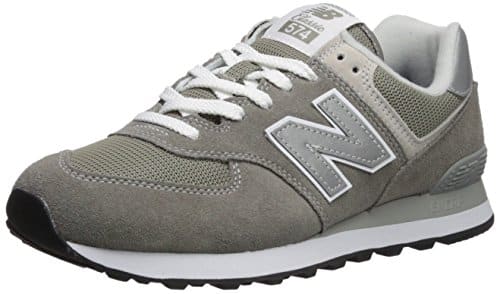
- Gives great weight spreading
- Super comfortable
- Very light in weight
- Great customer service and delivery
- Runs a bit small and tight
- Some say it has inconsistent size
- Gives great weight spreading
- Super comfortable
- Very light in weight
- Great customer service and delivery
- Runs a bit small and tight
- Some say it has inconsistent size
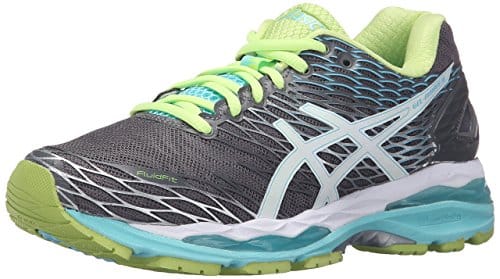
- Great for plantar fasciitis
- Gives great arch support for the low arch
- Great cushioning
- Comes in vibrant colors
- Not true to size, you may need to order a full size up
- A few people say it is inconsistent quality
- Great for plantar fasciitis
- Gives great arch support for the low arch
- Great cushioning
- Comes in vibrant colors
- Not true to size, you may need to order a full size up
- A few people say it is inconsistent quality

- Very lightweight
- Well ventilated
- Has a more pronounced support
- Hard to break in
- Foam area of the heel may rip off
- Very lightweight
- Well ventilated
- Has a more pronounced support
- Hard to break in
- Foam area of the heel may rip off
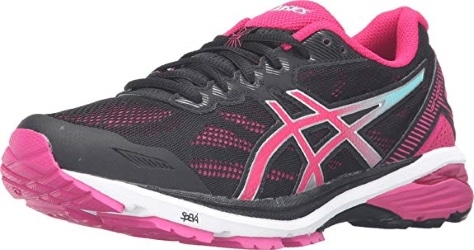
- Orthotics can fit the shoe
- Has moderate stability and cushioning
- Good stability
- Runs narrow
- Is not slip resistant
- Orthotics can fit the shoe
- Has moderate stability and cushioning
- Good stability
- Runs narrow
- Is not slip resistant
What is Plantar Fasciitis?
Plantar fasciitis is a painful condition that affects the sole of the foot and the heel. It occurs when the tissue called plantar fascia, which connects the heel to the toes, tears. The tears can appear because of it stretching too much, and cause pain. The cause of stretching can be things like running, standing for a long time and even putting on too much weight.
Features of the Best Running Shoes for Plantar Fasciitis
There are some key features that the running shoes for plantar fasciitis must have. Only then can they be deemed great for easing the pain linked with it. Some of these features are discussed in this section.
- Great Shock Absorption – The main role of the arch in your foot is to help absorb impact and shock while you walk or run. So, if this arch is not there, it means that all the shock will go to your joints, heel, ankle, hip, and knee. The result of this is untold pain caused to the runners. The first thing that runners who have this problem feel are the clumsy slump instead of the normal bounce in the step. But good running shoes for plantar fasciitis help by absorbing shock when the foot hits the ground.
- Optimum Arch Support – Runners with plantar fasciitis should know that arch support is the most vital thing to look for in a running shoe. This is because a shoe without proper arch support will make your problem worse. It will make your plantar fascia compress and stretch. A pair of running shoes with optimum arch support will give you a better run. Moreover, it also helps you ease the pain linked to plantar fasciitis. Based on how severe your problem, arch support comes in varying degrees for you to choose from. It is advised that people with extreme cases avoid low arches and chose shoes with maximum arch support.
- Sturdy Midsole – The main goal of running shoes for plantar fasciitis is to help ease the pain in the feet. The shoes do this by absorbing shock from the force of impact. At the same time, they train the feet to get firmer and grow natural arches. A shoe that has a firm midsole, a robust heel counter, and flexible toe box will curve greatly at the forefoot. It will also stay sturdy at the rear-foot. Shoes with stronger midsole will make sure that your arch is kept in the right place to reduce stress on the tissue.
- Good Brand – Experts advise to go for running shoes made by well-known brands. This is because most top brands have good resources, finances, and technology. Thus, they can design running shoes that are the best fit for people with foot problems. Most of these top brands have invested a lot in medical research. They keep going to invest in the latest technologies to stay relevant and to compete in the industry. Rather than gambling with the unknown, it is better to choose brands that have got customer reviews. This gives you a better chance to get the right to buy.
- Heel Support – Proper heel support is yet another key factor that you must take note of. You must have this in a running shoe if you don’t want your foot to roll from one side to the other. An unstable stride can worsen the issue. Stress will go to the wrong parts of the foot if you are not walking with proper heel support. The heel is the most area that gets the most impact and plantar fasciitis occurs where the heel meets the fascia tissue. Proper heel support needs a good deal of thought when buying running shoes for this problem.
- Ergonomic Sole or Insole – The best shoes for runners with plantar fasciitis are the ones made to give maximum comfort. Shoes with ergonomic soles are best known to give a great deal of comfort. They help take stress off the joints and reduce the impact of each step on the heel. Apart from helping absorb shock, an ergonomic sole also increases the blood flow around your foot. This is done by keeping away odor and bacteria that may weigh your foot down.
Key Considerations When Buying A Shoe for Plantar Fasciitis
You must also consider some of the factors below when making a buying choice.
- Breathability – Running shoes for plantar fasciitis must be able to breathe. This is done by advanced technology with materials high in quality and light in weight. The best options will always have an upper that is made from the industry’s standard fabrics. Some brands come with an upper that allows airflow. They do this using layers made of mesh and other materials that allow air to pass. In the end, your choice should always have proper airflow for a comfortable run.
- Proper Comfort – Runners with plantar fasciitis need shoes that can give them the needed comfort. It is not just about having the right support for your arches, but also giving proper comfort. With the center support, your shoes should also consequently give good cushioning for the forefoot and the heel. This is since the heel shoulders the stress caused due to the high arch pushing down. From our research, every brand seems to have a proprietary technology for midsoles and cushioning systems.
- Stability – Higher arches will demand maximum stability from your shoes. Usually, high arches will not allow the foot to have much central contact. Hence, a good model should fill in that gap by giving the needed stability. Additionally, it is worthy of note that a pair with good stability will give a steady running platform to maintain a confident and natural stride.
- Flexibility – Flexibility is yet another thing that runners with plantar fasciitis must take note of. In fact, runners can deal with the stiffness in their feet by proper flexibility in shoes. It also helps spread shock from impact evenly around the foot. Moreover, the most flexible running shoes are made of a mesh or synthetic upper. The shoe’s midsole and outsole should be flexible enough to allow the natural movement of the foot.
- Shoe Shape – The shoe shape is also a key factor to take into account. The best shape for runners with plantar fasciitis is curved last, as it allows a runner to have neutral pronation. In addition, the fabric should be able to wrap around the foot and give a very snug fit. As a result, this gives proper cushioning, comfort and flexibility.
Common Causes of Plantar Fasciitis
You run a risk of getting this problem if you:
- Walk, run or stand a lot.
- Overpronate, that is, your feet roll inwards when you walk or run.
- Have very tight calf muscles.
- Have a flat foot or high instep.
- Gain weight
- Are aging
Simple Home Tests for Plantar Fasciitis
When you have foot pain, there are some simple tests you can carry out at home before you see a podiatrist. These can help to know if it is due to plantar fasciitis.
- First Step Test – Do this test by taking note of the first step you take when you get of bed in the morning. Note whether you feel a lot of pain near the heel, which slowly subsides as you take further steps. If you do, it is likely due to plantar fasciitis.
- Hot Spot Test – Do this test by sitting on a chair, bending your knee and placing the aching foot on your other knee. Then, press the heel area firmly with your thumb. If you feel severe pain (known as ‘hot spots’), you likely have plantar fasciitis.
Symptoms of Plantar Fasciitis
A lot of runners don’t know the fact that they might have plantar fasciitis. People often mistakenly take heel pain to be a minor problem that will subside with time. This may turn out to be very risky as it may make the pain worse and lead to other problems. Here are some common symptoms to watch out for to know if you suffer from this problem:
- You feel a bad pain near your heel in the base of the foot
- The pain worsens when you take the first few steps as you get out of bed
- This pain slowly goes away as you take a few more steps
- Painful feeling reappears if you stand or run for a long time
- Your feet hurt as you climb the stairs
The Best Ways to Treat Plantar Fasciitis
Those runners who suffer from plantar fasciitis need not worry about their running career because it is something you can deal with. In fact, about ninety percent of the reported cases can be heal without even going to a doctor. Here are some of the best ways to treat it:
- Limit your activity to get your feet healed. Don’t do too much of running or sports until your foot heals.
- Massage your feet with a zip-lock bag filled with ice.
- Tape your feet because that gives the needed support to the fascia tissue.
- Use night splints to reduce your morning pains.
- Get an expert to massage your foot massage on a regular basis.
- Wear shoes with proper support and good cushioning.
- You may also use orthotic insoles.
Some Key Facts About Plantar Fasciitis
If you suffer from plantar fasciitis, there are some facts that you should know.
- The plantar fascia is the largest tissue in the body.
- The main symptoms of plantar fasciitis are:
- Foot pain
- Heel pain
- Tenderness
- Stiffness
- Plantar fasciitis can occur on its own or with other diseases.
- Extreme plantar fasciitis can result in plantar fasciosis.
- People often mistake it for Baxter’s neuritis, which is a nerve cramping in the heel.
- It is diagnosed by physical checkup as well as based on the person’s history.
- About ten percent of the people get plantar fasciitis at some point in their life.
- The age group most likely to get plantar fasciitis is people that are 40 to 60 years of age.
- Ninety percent of reported cases will heal without a doctor’s aid.
- The average daily cumulative shock that your feet can absorb is equal to the weight of a fully loaded cement truck.
- Runners are more likely to suffer from plantar fasciitis.
Final Thoughts
Overall, plantar fasciitis is a problem that is stems due to the tearing of the tissue that joins the heel with the toes. It is a very common problem in runners but is often ignored. Moreover, we also mentioned the various symptoms of this problem and its possible causes. In summary, research suggests that a good pair of running shoes designed especially for plantar fasciitis can go a long way to solve the problem. With that being said, we believe that our recommended shoes here will help you pick the best one for your feet.

